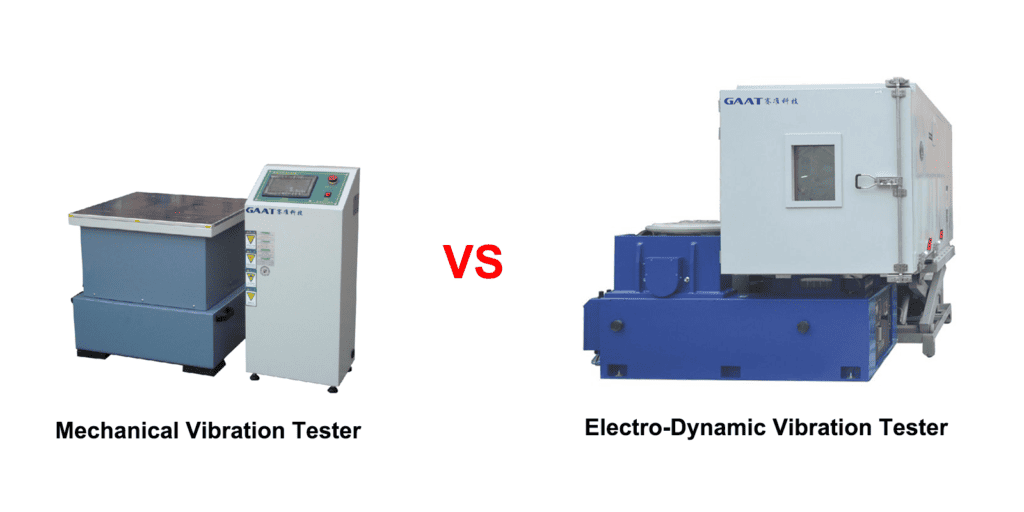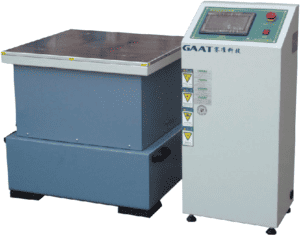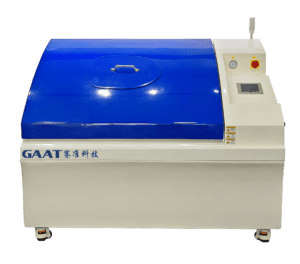
Introduction
Vibration testing is a crucial aspect of product development and quality assurance in various industries. Two commonly used instruments for vibration testing are mechanical vibration testers and electro-dynamic vibration testers. While both serve the purpose of simulating real-life vibration scenarios, they differ in their operating mechanisms, applications, and advantages. In this article, we will explore the key differences between mechanical vibration testers and electro-dynamic vibration testers to help you understand their unique features and make an informed decision for your testing needs.
The Difference Between Mechanical Vibration Tester and Electro-Dynamic Vibration Tester
Mechanical Vibration Tester
A mechanical vibration tester, also known as a shaker table, utilizes mechanical mechanisms to generate vibrations. It typically consists of a sturdy platform or table that moves in specific patterns and amplitudes. The motion of the table can be controlled manually or through mechanical linkages, providing precise control over vibration parameters such as frequency, amplitude, and waveform.
Applications of Mechanical Vibration Testers
Product Reliability Testing: Mechanical vibration testers are extensively used to evaluate the durability and reliability of various products, including electronic components, automotive parts, and consumer goods. By subjecting the products to controlled vibrations, manufacturers can assess their ability to withstand real-world conditions.
Structural Analysis: Engineers employ mechanical vibration testers to analyze the structural integrity of buildings, bridges, and other infrastructure. By subjecting these structures to controlled vibrations, they can identify potential weaknesses, resonance frequencies, and modal characteristics.
Packaging Testing: Mechanical vibration testers are crucial in the packaging industry to simulate the vibrations products experience during transportation and handling. This helps manufacturers design and optimize packaging materials and methods to ensure the protection and safety of goods.
Electro-Dynamic Vibration Tester
An electro-dynamic vibration tester, often referred to as an electro-dynamic shaker, operates based on electromagnetic principles. It utilizes an electromagnetic coil and a permanent magnet assembly to generate vibrations. When an electrical current passes through the coil, it interacts with the magnetic field, resulting in a force that moves the shaker head and imparts controlled vibrations to the test specimen.
Applications of Electro-Dynamic Vibration Testers
Aerospace Testing: Electro-dynamic vibration testers are extensively used in the aerospace industry to simulate the vibrations experienced by aircraft, spacecraft, and their components during operation. This ensures that the structures and systems can withstand the harsh conditions of flight and maintain their functionality and reliability.
Automotive Testing: In the automotive industry, electro-dynamic vibration testers play a crucial role in evaluating the performance and durability of automotive parts. From engines and suspension systems to body structures, these testers simulate the vibrations experienced by vehicles on different road surfaces and under various driving conditions.
Electronics Testing: With the increasing miniaturization of electronic devices, it is essential to evaluate their response to vibrations. Electro-dynamic vibration testers enable manufacturers to assess the effects of vibration on electronic components, such as printed circuit boards (PCBs), ensuring their reliability and functionality.
FAQs (Frequently Asked Questions)
Q1: Which type of vibration tester is more versatile, mechanical or electro-dynamic?
Both mechanical vibration testers and electro-dynamic vibration testers offer versatility, but their applications may vary. Mechanical vibration testers are suitable for a wide range of industries, including electronics, automotive, and packaging. On the other hand, electro-dynamic vibration testers excel in aerospace, automotive, and electronics testing. The choice between the two depends on the specific requirements of the testing application.
Q2: What are the advantages of using a mechanical vibration tester?
Mechanical Vibration Testers offer several advantages:
Cost-Effectiveness: Mechanical vibration testers are generally more affordable compared to electro-dynamic vibration testers. This makes them a preferred choice for organizations with budget constraints.
Durability: Mechanical vibration testers are known for their robustness and ability to withstand heavy loads and harsh testing conditions. The mechanical components used in these testers are designed to endure rigorous vibrations without compromising performance.
Flexibility: Mechanical vibration testers provide a high degree of flexibility in terms of adjusting vibration parameters. The control mechanisms, such as manual adjustments and mechanical linkages, allow precise control over frequency, amplitude, and waveform. This versatility enables users to simulate a wide range of vibration scenarios.
Ease of Maintenance: Mechanical vibration testers have relatively simple designs, consisting of mechanical components that are easy to maintain and repair. They do not rely on complex electrical systems or sophisticated control algorithms, making maintenance tasks less time-consuming and costly.
On the other hand, Electro-Dynamic Vibration Testers offer distinct advantages:
Precise and Controlled Vibration: Electro-dynamic vibration testers provide precise control over vibration parameters. The electromagnetic coil and permanent magnet assembly generate controlled vibrations with high accuracy, allowing for precise replication of real-world vibration conditions.
Wide Frequency Range: Electro-dynamic vibration testers can produce vibrations across a broad frequency range, from very low frequencies to high frequencies. This enables comprehensive testing and evaluation of products that experience vibrations across different frequency spectrums.
High Acceleration Levels: Electro-dynamic vibration testers are capable of generating high acceleration levels, making them suitable for testing applications that require intense vibrations. This is particularly important in industries such as aerospace and automotive, where products need to withstand extreme vibration conditions.
Advanced Control and Monitoring: Electro-dynamic vibration testers often come equipped with advanced control and monitoring systems. These systems allow users to precisely adjust vibration parameters and monitor the response of the test specimen in real-time. The availability of data logging and analysis features further enhances the testing process.
In summary, while mechanical vibration testers are cost-effective, durable, and offer flexibility, electro-dynamic vibration testers provide precise control, a wide frequency range, high acceleration levels, and advanced control and monitoring capabilities.
Conclusion
Mechanical vibration testers and electro-dynamic vibration testers serve as valuable tools for conducting vibration testing in various industries. Understanding their differences, advantages, and applications is crucial for professionals involved in product development, quality assurance, and structural analysis. The choice between the two types of testers depends on specific testing requirements, budget considerations, and the desired level of control and precision.
By selecting the most suitable vibration tester, organizations can ensure the reliability, durability, and performance of their products, leading to enhanced customer satisfaction and reduced risks associated with vibration-related failures.


